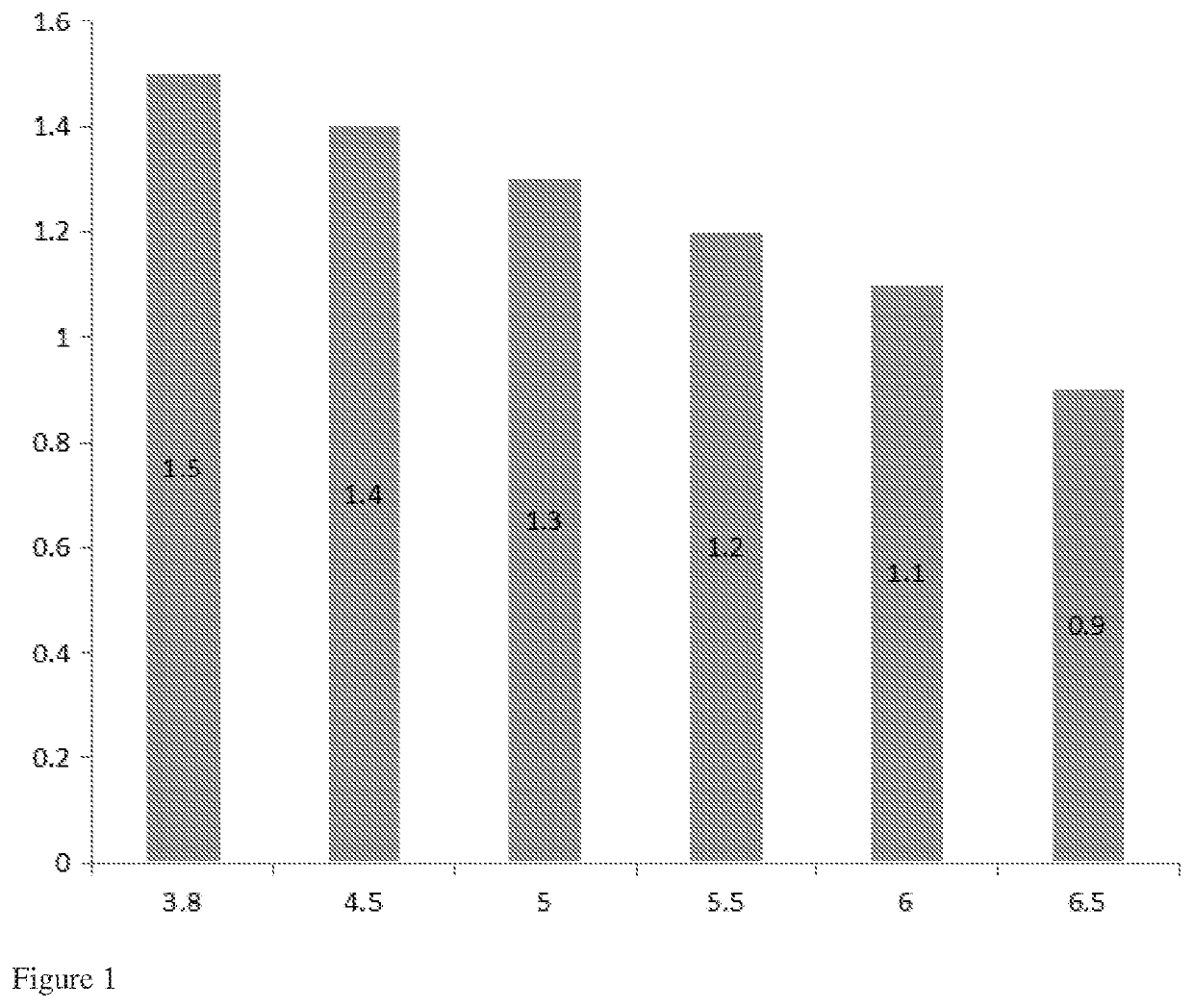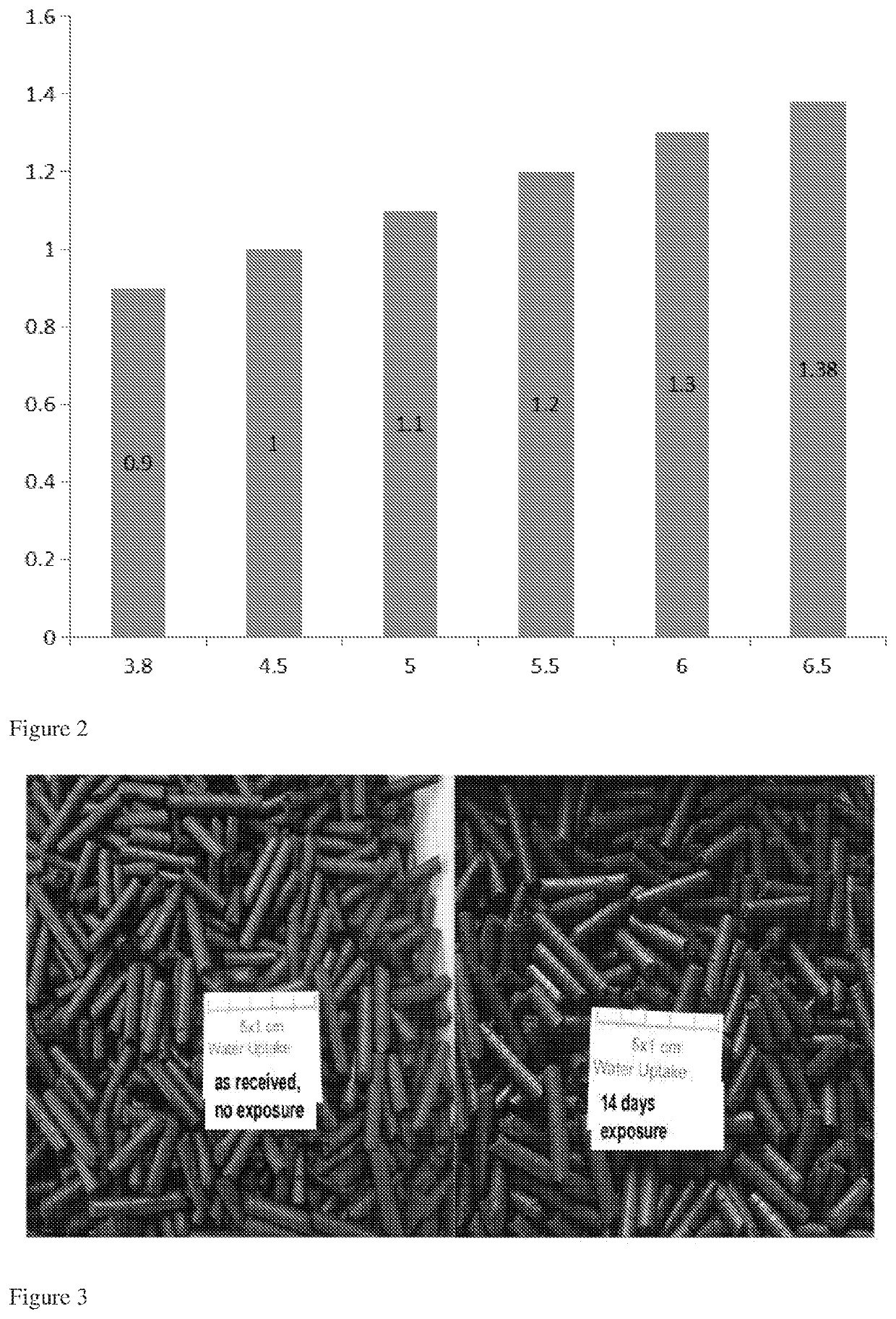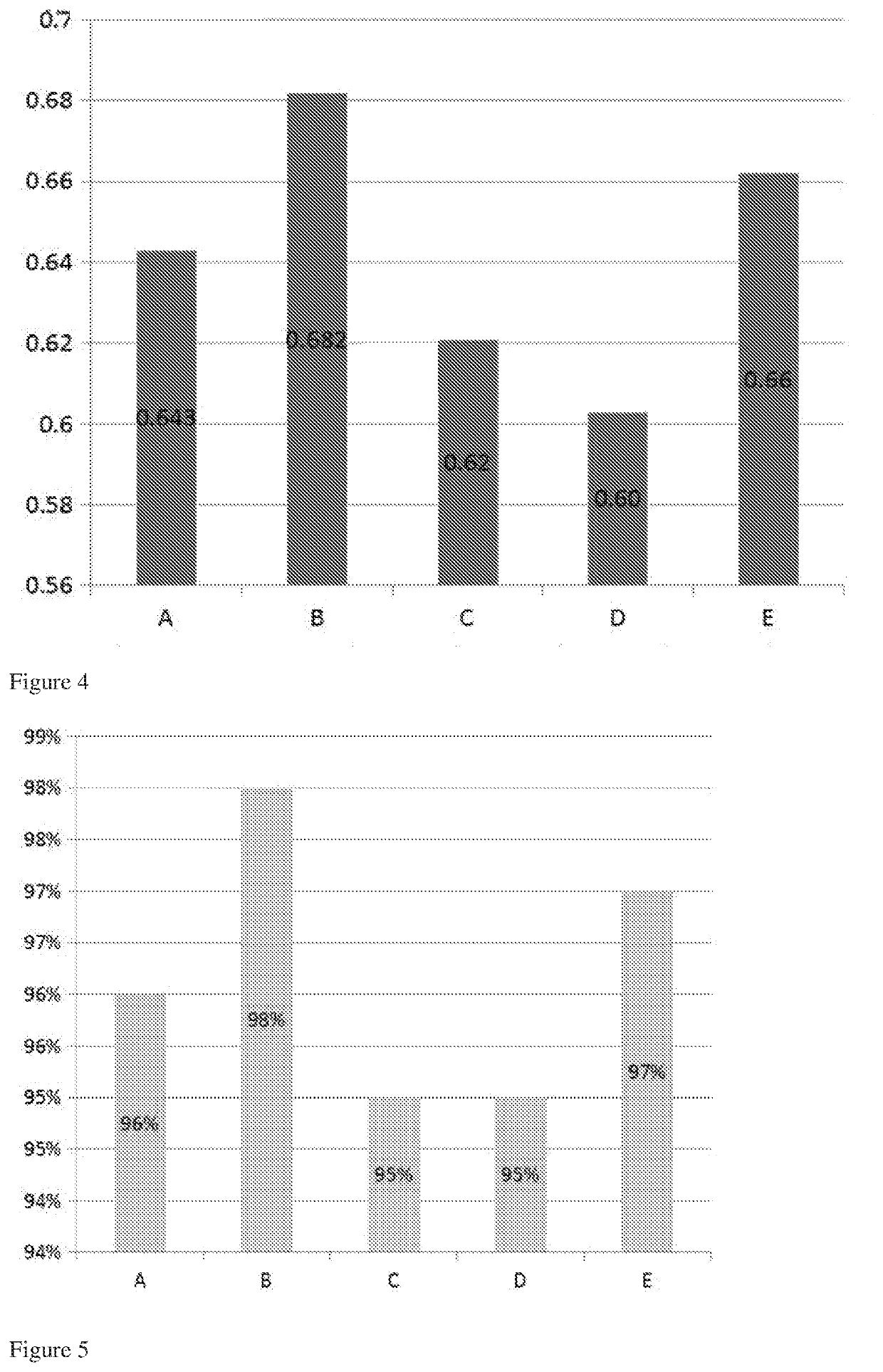Process for producing solid biomass fuel
a solid biomass fuel and process technology, applied in biofuels, fuels, waste based fuels, etc., can solve the problems of difficult commercial cultivation and harvest, high cost of pulverising biomass sources, and the discussion of solid biomass fuels prepared from biomass sources, etc., to achieve reduced process costs, improved processing efficiency, and improved homogeneity
- Summary
- Abstract
- Description
- Claims
- Application Information
AI Technical Summary
Benefits of technology
Problems solved by technology
Method used
Image
Examples
example 1
[0140]A process according to the present invention was carried out. The source of biomass was Calliandra calothyrsus only. The temperature of the heating step was from 220° C. to 280° C. for a time period of from 0.5 to 3.5 hours, and cooled to obtain a solid biomass fuel.
[0141]A photograph of the solid product is shown in FIG. 3.
example 2
[0142]A process according to the present invention was carried out. The source of biomass was Calliandra calothyrsus in an amount of 70 wt %, Acacia mangium in an amount of 10 wt %, eucalyptus (Albizia chinensis) in an amount 10 wt % and the rubber tree (Hevea brasiliensis) in an amount of 10 wt %.
[0143]The temperature of the heating step was from 220° C. to 280° C. for a time period of from 0.5 to 3.5 hours, and cooled to obtain a solid biomass fuel.
example 3
[0144]A process according to the present invention was carried out. The source of biomass was Calliandra calothyrsus in an amount of 70 wt %, straw in an amount of 10 wt %, rice husk in an amount of 10 wt %, and coconut shell in an amount of 10 wt %.
[0145]The temperature of the heating step was from 220° C. to 280° C. for a time period of from 0.5 to 3.5 hours, and cooled to obtain a solid biomass fuel.
PUM
 Login to View More
Login to View More Abstract
Description
Claims
Application Information
 Login to View More
Login to View More - R&D
- Intellectual Property
- Life Sciences
- Materials
- Tech Scout
- Unparalleled Data Quality
- Higher Quality Content
- 60% Fewer Hallucinations
Browse by: Latest US Patents, China's latest patents, Technical Efficacy Thesaurus, Application Domain, Technology Topic, Popular Technical Reports.
© 2025 PatSnap. All rights reserved.Legal|Privacy policy|Modern Slavery Act Transparency Statement|Sitemap|About US| Contact US: help@patsnap.com



